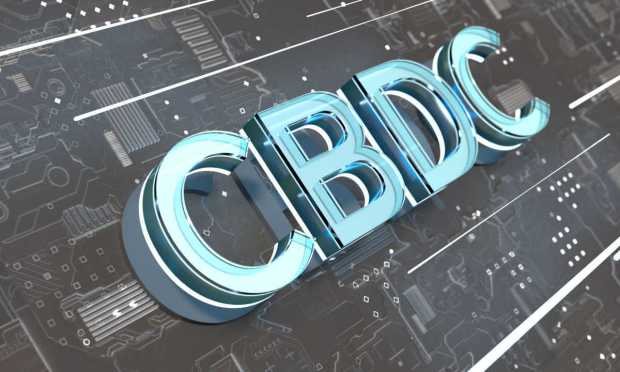Global CBDC Real-Time Payment Network Launches in Davos

Leave it to the lofty inspirations of the World Economic Forum to come up with the Universal Digital Payments Network.
This, as the new cross-border digital currency payments portal made its debut Thursday (Jan. 19) in the Swiss resort-turned-summit under the shortened “UDPN” moniker, with the equally ambitious goal of providing global interoperability between regulated stablecoins and central bank digital currencies (CBDCs).
As of this writing, 114 countries, representing over 95% of global GDP, are exploring to some degree the feasibility of launching a CBDC for their nation, by researching, and even acting out, what the issuance of a sovereign, virtual currency backed by a federal banking system might mean for their respective economies.
While much of the CBDC focus so far has been centered around domestic, intra-border use cases, the UDPN is designed to translate so-called digital dollar benefits including real-time payment speed and minuscule processing fees to international financial transactions that may one day use central bank-issued digital fiat.
As PYMNTS has reported on previously, governments around the world are increasingly experimenting with their own national legal tender. Now they may have a way to exchange these next generation assets with each other across borders.
The Future of Money
During today’s launch event, the UDPN was described as having “the potential to drive down the cost of digital payments and accelerate adoption by banks and businesses of all sizes.”
Underpinned by distributed ledger technology (DLT), the same technology popularized by the blockchain, UDPN’s developers have described it as “well ahead” of other digital currency payments projects.
Whereas most major incumbent payment networks in operation today, as well as several digital currency payment initiatives, take a more centralized hub-and-spoke approach to their networks, UDPN boasts government and management that is decentralized as a key differentiating factor.
Having launched after two years of development, UDPN’s creators feel confident in its capability to provide interoperability between the fast-growing number of various regulated stablecoins and CBDCs, and seamless connectivity between any business IT system and other regulated digital currencies, including cryptocurrencies.
“The purpose of UDPN is to investigate a potential alternative to existing payments system,” said Marika Lulay, CEO of IT solutions provider GFT who participated in the network’s genesis. “The decentralized approach and geographic breadth of participating firms, combined with the advanced technological solution deployed for these trials, set this network apart.”
The payment network was developed as part of a joint effort by GFT and decentralized cloud infrastructure company Red Date Technology, with further support from TOKO, a digital asset creation engine developed in collaboration with DLA Piper. Red Date Technology is also known as the developer of the state-backed blockchain network in China, blockchain-based service network (BSN).
Read more: Central Banks Pursue CBDCs in 2023 but Diverge on Design
The UDPN project has involved multiple leading global banks in its testing milestones, and established a so-called Sandbox, or isolated testing environment, last July where the traditional financial institutions actively tested stablecoin transfer and foreign exchange (FX) transactions.
As relayed during today’s launch event, more banks will be included in a series of use-case proof of concepts (POCs) later this month with the stated goal of demonstrating how UDPN might one day solve the challenges of integrating CBDCs and other digital currency into daily banking, business, and payment scenarios, as well as how financial institutions can execute anonymous stablecoin transfers through the “travel rule” function.
Pulse Check on the US CBDC Landscape
As reported by PYMNTS, a project from the Federal Reserve Bank of Boston and the Digital Currency Initiative at the Massachusetts Institute of Technology (MIT) has proven the technical feasibility of a U.S. CBDC, while the New York Federal Reserve is conducting a “watershed” digital currency project with a consortium of leading commercial financial institutions, including BNY Mellon, Citi, HSBC, Mastercard, PNC Bank, Truist, U.S. Bank, TD Bank and Wells Fargo.
That said, an updated white paper published Wednesday (Jan. 18) by the Digital Dollar Project, a nonprofit organization advocating for a U.S. CBDC, conceded that the U.S. has so far conceded a “head start to other nations in setting global standards for the future of money.”
“In the coming CBDC future, the U.S. should actively lead global discussions on governance, interoperability, security, privacy and scalability standards rather than reacting to foreign CBDC decisions,” the paper added.
The theme for this year’s Davos summit is “Cooperation in a Fragmented World.” Let’s hope the newly revealed UDPN is a step in that direction.
